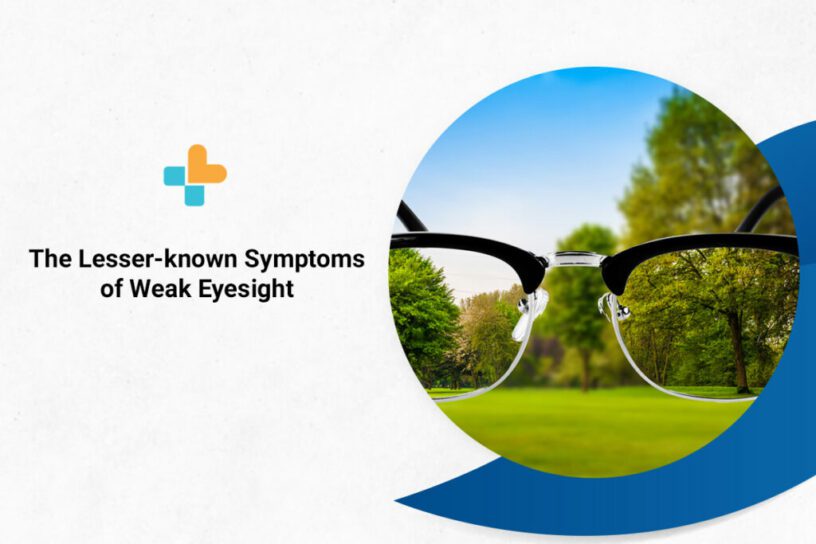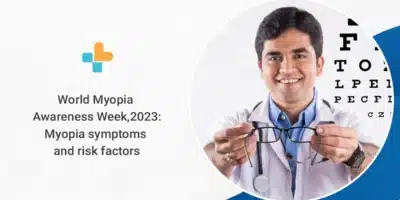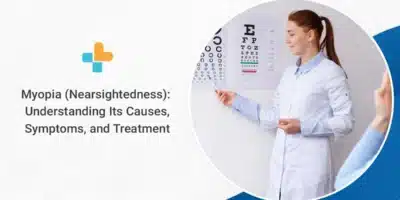Our eyes are one of the most important sensory organs in our human body. By sending signals to the brain through the optic nerve, the eyes provide vision and help us to see and observe different shapes, colours, patterns, textures, and movements. Besides providing us with a sense of sight, the human eye helps improve brain focus.
Furthermore, the eyes can gather information from the surroundings and transfer the collected information to the brain for interpretation. Nowadays, weak eyesight is a common problem, and several eyesight conditions affect our health. Weak eyesight occurs for various reasons, such as watching television for a long time, continuous exposure to mobile screens, injuries, and certain diseases such as glaucoma and diabetes.
What Does It Mean to Have Weak Eyesight?
Weak eyesight is the loss of vision due to eye disorders such as glaucoma and cataracts, certain medications, lack of vitamins, and longer exposure to bright light beams.
Symptoms of Weak Eyesight
There are various symptoms of weak eyesight, and we shall read about them individually.
- Blurry vision
- Glare
- Double vision
- Squinting
- Headaches
- Seeing halos around light sources
1. Blurry Vision
One of the early identifiers of having weak eyesight is blurry vision. This happens when the components of your eye, such as the cornea or retina, cannot focus light in the right spot. This may occur due to various possible reasons. If you have been staring at a screen or focusing on a task for a long time, your eyes may get tired or dry.
Another reason can be diabetes due to poor control of blood sugar levels. This causes your eyes to swell up and cause damage to the tiny blood vessels in your retina. Sometimes, blurry vision is a result of low blood pressure too. If your blood pressure is low due to dehydration, you tend to feel weak and dizzy.
Other reasons for blurry vision are fluid building up in the eyes called glaucoma, getting a migraine, sustaining any damage to your retina, getting older, and disease conditions like stroke, multiple sclerosis, and cataract.
2. Glare
Eyesight is directly related to the amount of light that enters your eyes. However, if you are exposed to light beams of greater intensities than your eyes can take, it results in a visual discomfort called glare. You naturally feel a glare when there is a loss of visual performance. Sometimes, glare can cause distractions or lead to dangerous risks, such as while driving. They may cause temporary blindness depending on the intensity of stray light entering our eyes.
Some common types of glare are distracting glare, discomforting glare, and disabling glare. Distracting glare occurs when the light gets reflected from one medium to another, such as from air to glass. Discomforting glare is the most common type that can occur at any time and in any weather and leads to eye strain. Disabling or veiling glare generally interferes with vision and decreases the lens’s transparency.
3. Double Vision
Double vision is an eye condition in which you see two images of a single object while looking at it. It occurs as a result of a temporary loss of visual focus. Known by the medical term diplopia, it may occur from time to time when you feel dizzy, nauseous, or have a headache. It is usually not a serious eye condition but may cause temporary, weak eyesight.
Double vision can be monocular or binocular. It is called monocular diplopia if you have blurry or double vision in one eye. It is called binocular diplopia when both your eyes are misaligned when they are weak or if the nerves controlling the eye muscles have abnormalities.
You may experience double vision while waking up to heavy sunlight if you suffer a concussion by banging your head or have a migraine. Double vision can be corrected by simple eye exercises or wearing spectacles or contact lenses. You can prevent double vision by maintaining good eye health habits, such as not spending long hours watching an electronic screen, avoiding smoking and alcohol, and taking an eye exam annually.
4. Squinting
Squinting involves pointing your eyes in different directions or looking at something with partially closed eyes. A squint is also called strabismus and occurs at any age, especially in young children. We usually tend to squint while facing bright sunlight so our eyes can adjust and allow an optimal amount of light to reach our retina.
Squints occur when your eye muscles do not work together and lead to your eyes being unable to view the same spot simultaneously. It may also occur due to brain injury or trauma that impacts the ability of your eyes to work together.
It may be hereditary, runs in families or congenital, with children having it since birth. You can notice squint and double vision if a child keeps one eye closed or tilts his head whenever he looks at things.
5. Headaches
One of the primary symptoms of weak eyesight in adults is headaches. Migraines and sinus headaches tend to affect your eyes. Using electronic gadgets with screens usually causes headaches when you strain your eyes for too long. This may cause sensitivity to light and lead to blurry vision and watery eyes.
Ocular migraines may occur from time to time in some people and cause visual disturbances. It may further cause night blindness, distorted vision, and eye irritation. In high-severity cases, painful headaches in clusters may occur, known as cluster headaches. They occur in cycles and commonly happen in adolescents.
6. Seeing halos around light sources
If you are starting to see halos around lights, your cornea is getting weak and can lead to severe eye disorders such as cataracts or glaucoma if left untreated. It is natural to see halos when you focus on natural light sources like the sun and moon. But seeing rings or circles around artificial light sources such as lamps or headlights is a cause of concern.
Halos are also caused due to frequent use of eyeglasses or contact lenses. If a person develops a cataract, cloudy areas start forming in the eye’s lens and lead to seeing halos around light sources. High fluid pressure in the eyes due to optic nerve damage causes glaucoma, which makes people see halos around lights.
Conclusion
It is recommended to get your eyes checked annually or bi-annually. Having your vision corrected ensures healthy eyesight and helps to detect certain eye conditions such as myopia and hypermetropia. Routine eye exams also help to detect sugar and cholesterol levels in your body. The various reasons for weak eyesight are blurry vision, glare, double vision, squinting, headaches, and seeing halos through light sources.
Ayu Health is a chain of high-quality hospitals across Bangalore. With a team of experienced doctors and medical specialists, we offer you every advanced treatment from Ophthalmology to cardiology. If you are looking for a comprehensive eye exam, feel free to drop by Ayu Health to get your eyes checked right away.
Our Hospital Locations
Ophthalmology Surgery Hospitals in Chandigarh | Ophthalmology Surgery Hospitals in Bangalore | Ophthalmology Surgery Hospitals in Jaipur | Ophthalmology Surgery Hospitals in NCR | Ophthalmology Surgery Hospitals in Hyderabad
Our Doctors
Ophthalmology Surgery Doctors in Chandigarh | Ophthalmology Surgery Doctors in Bangalore | Ophthalmology Surgery Doctors in Jaipur | Ophthalmology Surgery Doctors in NCR | Ophthalmology Surgery Doctors in Hyderabad




